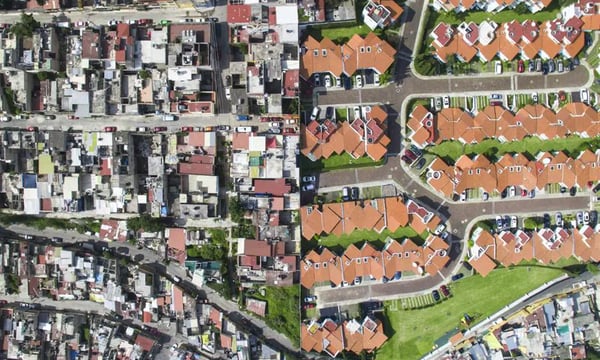Cost of Living Comparison Between Tokyo and Shanghai
Recently, the number of friends expressing a desire to move to Japan has surged, all coming to me for advice. Considering living far from home, the cost of living is an unavoidable issue.
However, I find this a bit challenging to answer: although migration is a significant decision, people have different views on the same matter, especially regarding the "value" of living costs, which varies from person to person.
Over the weekend, I saw a tweet shared by @wuzhe on X (formerly known as Twitter) mentioning a website called numbeo.com, a site where you can compare the cost of living around the world. Having lived in both Tokyo and Shanghai, I tried comparing their living costs and found the general direction to be accurate. Everyone can go here to see for themselves.
However, I noticed several issues. So, I've selected some parts I believe are worth explaining, based on my personal experience. For currency conversion, you can simply multiply the Japanese yen by 5 and divide by 100. For example, 100 Japanese yen is roughly equivalent to 5 Chinese yuan.
If interested, feel free to join my Telegram group chat.
Overview
Firstly, the website provides an overview:
I think, except for rent, everything else quite matches the feeling that "Shanghai is an international first-tier city, while also enjoying China's low-cost services"... However, relatively speaking, the happiness level of salaries in the service sector might be lower, which I will elaborate on in the salary section below.
As for rent, I will detail it when discussing housing.
Dining
The following image compares costs, with the first column being the item compared, the second and third columns the costs in Tokyo and Shanghai, priced in yen (first line) and yuan (second line), and the fourth column the difference (as will be the case in each section moving forward):
Overall, it matches expectations.
However, for everyday items like bottled water, the table lists 0.3 liters at 115.9 yen, likely reflecting convenience store and restaurant prices. If you buy in bulk, like online, a 2-liter bottle only costs 116 yen, as shown below from my recent purchase on Amazon:
And if you live in a more remote area with access to cheaper supermarkets, you might find 2-liter bottles of water for 80 yen each. Thus, for daily consumables, prices can vary significantly between convenience stores and supermarkets of different levels. A similar situation is seen in the "Supermarkets and Markets" comparison below.
Supermarkets and Markets
As mentioned, the price gap for everyday consumables can be vast depending on where you shop:
In Tokyo, generally:
The most expensive places are convenience stores. While they offer a variety of interesting items and are the most "convenient," they are indeed the priciest—"time is money, my friend."
Typically, the price hierarchy from high to low is: convenience stores > supermarkets > community stores.
However, this hierarchy isn't absolute, as supermarkets also vary in grade. Different supermarkets offer vastly different products and prices. Let me share some examples:
High-end supermarkets sell particularly expensive goods because they offer items unavailable elsewhere: high-quality fruits, branded desserts, imported foods, etc. For instance, shopping at "クイーンズ伊勢丹" is indeed pricier, but the quality is also significantly better. Moreover, some items on their shelves are not found in regular supermarkets, making them the only option for certain purchases.
Near my home, there's a Maruetsu petit, a mini version of Maruetsu, akin to a "selected hotel" in chain hotels?. Maruetsu petit stores are generally smaller and slightly more expensive than budget supermarkets, but their fruits are of better quality, and I frequent them often.
ライフ(LIFE) is another store I visit, belonging to the budget supermarket category. Many budget supermarkets in Japan sell food items as well as prepared meals, like ライフ. Below, you see a black beef bento box selling for just 598 yen:
For a while, when I didn't want to cook, I often bought prepared meals from supermarkets.
If you wait until after 7 PM, discounts are applied, and it's common to find half-price bentos. Therefore, visiting the supermarket after 7:30 PM often reveals many office workers waiting to buy half-price bentos.
Some supermarkets feel more like wholesale markets, such as 肉のハナマサ. They sell meat often labeled "for business use," like the one below, at cheaper prices
and in larger quantities:
業務用 generally means for use in settings outside the home, like schools, businesses, restaurants, etc. Because the quantities are larger, the prices are correspondingly lower. If you're used to shopping once a week, as in the U.S., and don't go to Costco, these types of supermarkets are a good alternative.
Seria is less a supermarket and more a chain of "100 yen stores." Here, "100 yen" refers to items priced around one hundred yen, similar to the "ten yuan store" concept in China. Seria sells a wide range of small household items—dishes, towels, scarves, phone cases, pots, stationery, toothbrushes, toilet plungers—all at very affordable prices, though the quality is generally average. When I first arrived in Japan, I often visited their stores. If you're new to Japan and want to quickly settle in with some basic household items, this is a good place to go.
Another "higher-end 100 yen store" is called "3COINS." It seems aimed at offering products that can be bought with three 100 yen coins. I've visited once and felt it was similar to MINISO in China, selling inexpensive household goods.
After moving, I didn't have a Seria nearby, but I found another store called ドン・キホーテ(Don Quijote). This is a large discount store that sells a wide variety of items, from food to clothes to electronics, all at very low prices.
Japanese vegetables and fruits are expensive, but there are still cheap places...





